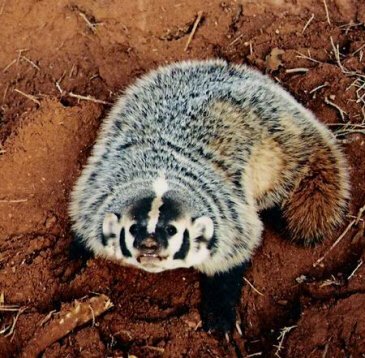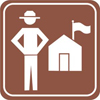Wildlife Viewing Tips

Successful wildlife viewing is as much a matter of practice as knowledge. Wildlife viewing is a lifetime learning experience. The goal of wildlife viewing is to observe animals without interrupting their normal activities. The first thing to do is to focus on looking, then, learn a few techniques to increase your wildlife viewing skills.
Where to look….
Wildlife really is everywhere, but you won't find everything everywhere. Wildlife needs a right combination of food, water, shelter and space to survive. Each species has its own preference. As your knowledge of each species preferences increases, you will find it easier to locate them.
When to look….
Time of day - In general, animals are more active in early morning and late evenings. This is when even nocturnal animals are still active and may offer opportunities to see them.
Season of the year - Many species appear during certain seasons at particular sites. Some animals hibernate while others concentrate into small wintering areas that may offer close-up opportunities for the patient viewer.
Consider weather - What we consider "bad" weather may make perfect opportunities for watching some species. Some animals are more active while others may decide to stay put and wait for better weather before resuming their normal activities. Before a storm, some animals come out to feed. After a storm, when the rain stops, the skies clear and the wind dies down, many animals become very active and will offer good viewing opportunities.
What to look for….
Learn how to act around bears.
Movement - Motion is usually the give-away. Animals that are running, walking, flying or swimming are the easiest to spot. Look also for little things like an animal twitching its ear, scratching, shaking or moving its head while feeding. When you stand still, you are better prepared to detect movement around you.
Shapes - Things may catch your eye because they are a little different. Watch for something that doesn't look quite right.
Color - Watch for the flash of color of birds in flight or the rusty fur of a fox. Your eye may catch a white mountain goat on a cliff or the dark shadow of a bear.
What lives there? - Habitat is the key to finding wildlife. Wildlife prefers certain sites. Finding the actual animal is not always guaranteed, but you can usually find clues that creatures live there. From bird nests to spider webs, animals leave a variety of messages such as trails, "rubbing spots", chewed or gnawed wood or branches, digging or scratches, nests, dams, tracks, scat, disturbed vegetation, tunnels, beds, cavities, food remains and caches. 
How to look….
Quiet, active viewing - The key to finding and watching wildlife is to do some "quiet, active viewing". Choose a good vantage spot and sit for a while. Take in the sights, sounds and smells that this place has to offer.
Look in different ways - Scan the whole landscape, begin with a general scan without focusing on any particular object. Allow your eyes to see everything around you. This way, you may catch the flick of a tail, the twitch of an ear or a flash of colour.
Use binoculars and scopes - They magnify your vision and allow a better view of details that would otherwise be missed without disturbing the animals.
Use all your senses - Sounds, smells, scents and sights are parts of the whole picture. Listen to the natural sounds around you. You may hear birds, frogs, insects, the leaves rustling, a rushing stream or wind in the treetops. Many animals keep their nose to the wind and depend on their sense of smell to warn them of approaching danger or to tell them of other animals nearby. Remember if you smell or find a decaying carcass, carefully leave the area the way you came. There may be a sleeping bear nearby.
Tips for success….
Move slowly - Slow down, stay quietly in one place and allow yourself to take on the natural pace of the world around you. Some animals may become curious and move in for a better look. Be patient, give wildlife time to get used to your presence and return to the business as usual.
Avoid eye contact - Avoid staring at an animal, instead, gaze all around, keeping the animal in sight through the corner of your eye.
Use the lay of the land - Use cover provided by the hills, hollows, gullies and ridges. Sit in front of things so your outline blends in with the surroundings. Avoid crossing open spaces where you will be detected by on-looking animals.
Before you go - Don't use perfume. Wear muted, natural coloured clothing. Wear warm clothing for the season and bring extra clothing in case the weather changes during your trip. Take binoculars or telescopes.
Smoking and fires may alert an animal to your presence.
When you arrive at your selected site….
Be quiet.
Look for animal signs, tracks, trails that may give you clues on where you might wait to view them.
Stop, look for several minutes, find a comfortable spot and sit for a while.
Sit with the sun to your back, in a place where there is cover for wildlife.
Watch for movement, colours and shapes.
Stay on established trails when you find one.
Listen many species are heard before they are seen.
|







